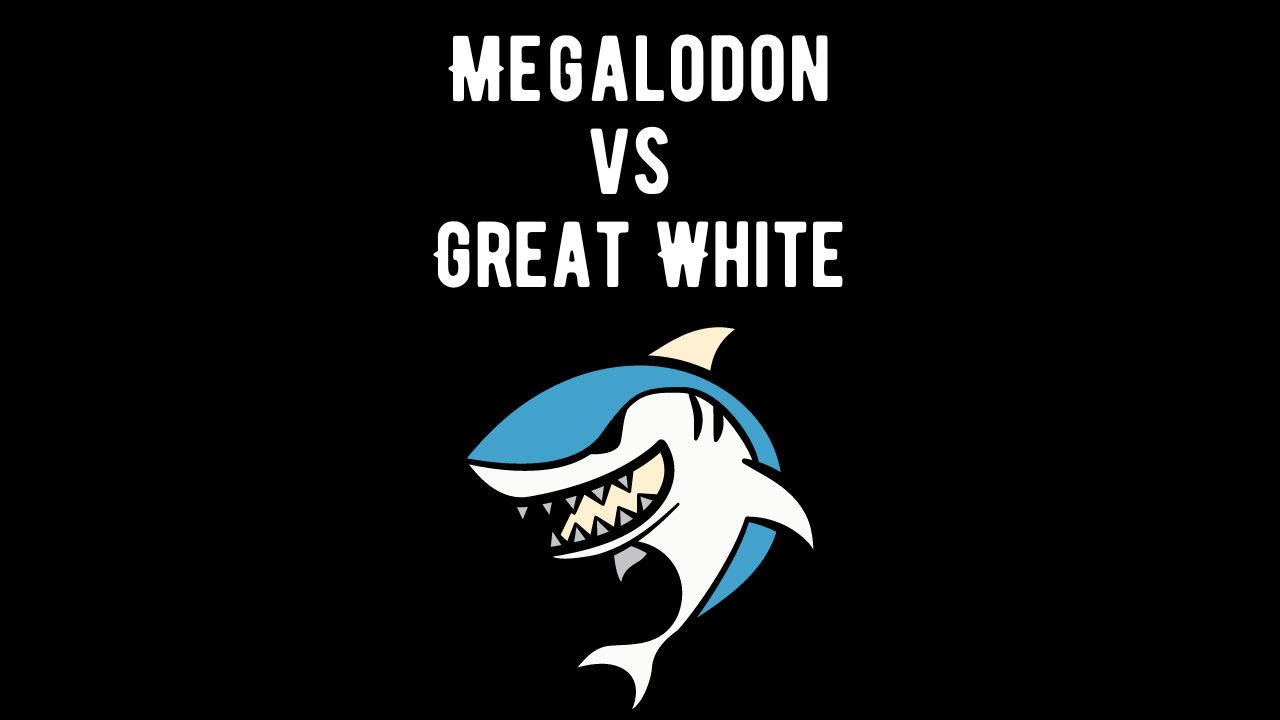
The Megalodon and the Great White Shark are two of the most iconic predators in the history of marine life. Despite the Megalodon’s extinction millions of years ago, its colossal size and mysterious existence continue to captivate the imagination. In this comparative exploration, we delve into the key differences and similarities between these formidable sharks.
I. Size and Appearance:
Megalodon:
- Size: The Megalodon was a giant prehistoric shark, with estimates suggesting lengths of up to 82 feet (25 meters) or more. Its sheer size makes it one of the largest predators to have ever roamed the oceans.
- Teeth: Megalodon teeth are massive, triangular, and serrated, measuring several inches in length. These teeth are adapted for gripping and slicing through the flesh of large marine mammals.
Great White Shark:
- Size: While still an impressive predator, the Great White Shark is considerably smaller than the Megalodon. Adult Great Whites typically range from 15 to 20 feet (4.5 to 6 meters) in length.
- Teeth: Great White Shark teeth are sharp, serrated, and triangular. They are designed for gripping and tearing prey, such as seals and fish.
II. Diet and Feeding Habits:
Megalodon:
- Prey: Megalodons were apex predators that likely preyed on large marine mammals, including whales. Fossilized remains of whale bones with distinctive Megalodon bite marks support this theory.
- Feeding Style: The Megalodon’s massive size and powerful jaws suggest a predation style involving biting off large chunks of prey.
Great White Shark:
- Prey: Great White Sharks are known for their diverse diet, including seals, sea lions, fish, and occasionally dolphins. They are also known to scavenge on whale carcasses.
- Feeding Style: Great Whites use a combination of biting and shaking to incapacitate their prey. They often breach the surface when attacking seals.
III. Habitat and Range:
Megalodon:
- Timeline: The Megalodon existed during the Miocene to the Pliocene epochs, approximately 23 to 3.6 million years ago. Fossils suggest a global distribution.
- Habitat: Megalodons inhabited a wide range of marine environments, from coastal areas to open ocean.
Great White Shark:
- Timeline: Great White Sharks have been around for a relatively long time, with their lineage dating back around 16 million years.
- Habitat: Great Whites are found in coastal and offshore waters worldwide. They are known to frequent areas with abundant prey, such as seal colonies.
IV. Extinction:
Megalodon:
- Timeline: The Megalodon became extinct around 3.6 million years ago during the Pliocene epoch.
- Causes: The exact reasons for the Megalodon’s extinction remain uncertain. Various factors, including changes in oceanic conditions and prey availability, have been proposed.
Great White Shark:
- Status: Great White Sharks are currently listed as a vulnerable species, facing threats such as overfishing and habitat loss.
- Conservation: Conservation efforts are underway to protect Great White Sharks and their habitats. These sharks play a crucial role in maintaining the health of marine ecosystems.
V. Pop Culture Impact:
Megalodon:
- Cultural Significance: The Megalodon’s enormous size and enigmatic existence have fueled numerous documentaries, books, and films, contributing to its cultural significance.
- Popularity: The Megalodon remains a popular subject in popular culture, often depicted in fictional scenarios and as a symbol of prehistoric marine terror.
Great White Shark:
- Cultural Presence: Great White Sharks have a strong presence in popular culture, frequently portrayed in films like “Jaws.” They are both feared and admired for their role as apex predators.
VI. Conclusion:
While the Megalodon and the Great White Shark share some characteristics as apex predators, their differences in size, habitat, and timeline emphasize the dynamic nature of shark evolution. The Megalodon’s colossal proportions make it a legendary figure in paleontological history, while the Great White Shark continues to roam the oceans, commanding respect as a modern predator.
In summary, the Megalodon and the Great White Shark represent distinct chapters in the evolutionary story of sharks, showcasing the remarkable adaptations that have allowed these apex predators to thrive in diverse marine environments.
FAQ’S about Megalodon and Great White Sharks
Q1: What is the main difference between Megalodon and Great White Sharks?
A: The main difference lies in their size. Megalodon was a colossal prehistoric shark, reaching lengths of up to 82 feet or more, while Great White Sharks are significantly smaller, typically ranging from 15 to 20 feet.
Q2: Did Megalodon and Great White Sharks coexist?
A: Megalodon became extinct around 3.6 million years ago during the Pliocene epoch, while Great White Sharks have been around for around 16 million years. They did not coexist; the Great White Shark evolved after the extinction of Megalodon.
Q3: What did Megalodon eat?
A: Megalodons were apex predators that likely preyed on large marine mammals, including whales. Fossil evidence, such as whale bones with Megalodon bite marks, supports this theory.
Q4: Are there any living relatives of Megalodon?
A: The closest living relatives of Megalodon are modern sharks, particularly the lamniform sharks. However, none of the extant shark species are direct descendants of Megalodon.
Q5: Why did Megalodon go extinct?
A: The exact reasons for Megalodon’s extinction remain uncertain. Various factors, including changes in oceanic conditions, competition for prey, and shifts in the marine ecosystem, have been proposed as contributing factors.
Q6: How fast could Megalodon swim?
A: Estimates of Megalodon’s swimming speed vary, but it is believed to have been a powerful and fast swimmer. Its size and streamlined body suggest it was well-adapted for efficient movement through the water.
Q7: Do Great White Sharks attack humans?
A: While rare, Great White Shark attacks on humans do occur. However, these sharks are not considered deliberate human hunters, and attacks are often cases of mistaken identity or exploratory bites.
Q8: What is the current conservation status of Great White Sharks?
A: Great White Sharks are listed as a vulnerable species. They face threats such as overfishing, accidental capture in fishing gear, and habitat degradation. Conservation efforts are in place to protect these sharks and their ecosystems.
Q9: How many teeth did Megalodon have?
A: Megalodon had multiple rows of teeth, with each row containing dozens of teeth. As teeth were lost or worn down, new ones would continuously replace them throughout the shark’s life.
Q10: Can Great White Sharks be found in both cold and warm waters?
A: Yes, Great White Sharks are versatile and can be found in both cold and warm waters. They have a global distribution and are known to inhabit coastal and offshore regions across various temperature ranges.






